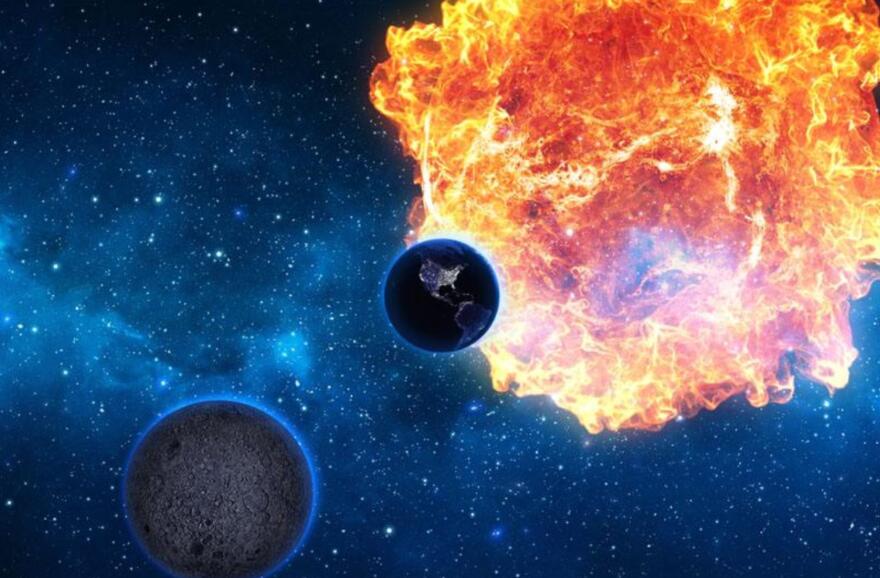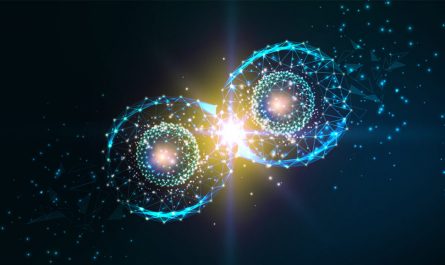The sun keeps burning and burning, emitting huge amounts of light and heat, which consumes much fuel. But the sun has been burning for 5 billion years, so why can’t it burn all the time? It is said that the sun will be dead in 5 billion years. Did the sun run out of fuel at that time?
Many friends have this kind of question, and today I will discuss this topic in a casual way, hoping to help my friends.
The end of the sun.
Scientists have long fortuned for the sun. Yellow dwarfs like the sun have a lifespan of about 10 billion years. Now the sun is 4.6 billion years old, and it has a lifespan of about 50 billion years. A yellow dwarf with a mass like the sun will return to light before death and expand into a huge red giant with a radius of about 200 to 300 times its original radius. At that time, it will be the end of the sun.
The surface temperature of the red giant is still about 3000K. In the process of expansion, Mercury and Venus can hardly escape bad luck, and it seems a foregone conclusion that the sun can swallow them. There are many theories about whether the earth will be swallowed. If the red giant star expands 200 times, the radius of the sun is now about 700,000 kilometers, 200 times that is 140 million kilometers, and the earth is 150 million kilometers away from the sun, then there will be a distance of 10 million kilometers, which may not be swallowed, but Will be roasted into a baked potato.
But it is impossible for the red giant of the sun to expand exactly 200 times its radius, or more than 200 times, and of course the earth will be swallowed.
It is also said that in the later stages of the solar evolution, the outer layer will continue to release gas, and finally the mass of the sun will be reduced to 60% of the present. Due to the weakening of gravity, the planets will begin to move away from the sun, which is 70% longer than the current distance. In this way, the earth floats to a distance of 255 million kilometers from the sun, and the red giant star of the sun expands to more than 300 times its current diameter before it may swallow the earth.
The end and the direction of the solar system.
The mass of the sun occupies 99.86% of the solar system. All planets revolve under the influence of the sun’s gravity. When the sun dies, can the descendants of the planets still exist?
One theory is that if the earth is not swallowed, then Mars, Jupiter, Saturn, Uranus, and Neptune will be left behind, but it is almost dead. Because the gas surrounding the red giant star of the sun will gradually drift in the air, and eventually only a dense carbon core will remain. This carbon core is about the same size as the current earth, but has a mass of more than 50% of the current sun, so its density reaches 1 Above tons/cm^3.
This is the corpse of the sun~white dwarf. The gravity of white dwarfs is much smaller, and light and heat are already very weak. Almost all the remaining planets are immersed in darkness, and they will become extremely cold, with temperatures close to absolute zero; while white dwarfs with much smaller gravity can contain them. Live on a planet that has escaped? If not, these planets will drift farther and farther, eventually disappearing into the dark and cold space and becoming wandering planets.
There is another saying that Jupiter’s opportunity has come at this time. The largest planet in the solar system may “eat” the sun’s material floating into space, and strengthen itself through accretion. When its mass reaches 8% of the sun, it can stimulate nuclear fusion in the core and become the smallest star. ~Red dwarf. And Mars, the Earth, etc., which are close to Jupiter, may change to a new master and revolve around this “self-reliant” new star.
In this way, the solar system becomes a binary star system with a red dwarf star and a white dwarf star, and a new star system is formed. I have analyzed and discussed this issue many times in the past. Friends who are interested can refer to my past articles. I won’t go into details here.
The lifespan of stars.
We know that all stars are mainly composed of hydrogen and helium. If calculated by volume, hydrogen accounts for about 90%, helium accounts for less than 10%, and the remaining elements are about 1%. And all stars are formed by centripetal gravitational pressure because of their huge mass, which puts the core part under high temperature and pressure, which triggers hydrogen nuclear fusion. The core nuclear fusion produces a huge radiation pressure, which withstands the centripetal gravitational pressure of the huge mass of the star, forming a balance. This is the main sequence phase of the star, that is, the main sequence star with the most stable star and the longest life cycle. stage. We usually say that the life of the sun is 10 billion years, which is the life of its main sequence star.
The continuous nuclear fusion in the center of the star produces huge energy radiation, which makes the main sequence star phase of the star glow and heat steadily, radiating energy continuously into space. So how big is this energy consumption? How long does it take for a star to burn out its fuel?
Different stars have different degrees of nuclear fusion, so the rate of fuel consumption is also different. The basic common sense is that the higher the mass of the star, the higher the gravitational pressure and temperature of the core, the more intense the nuclear fusion, the faster the fuel burns, and the shorter the life span; the smaller the star, the higher the gravitational pressure and temperature of the center. Low, nuclear fusion is more gentle, fuel consumption is smaller, so life span is longer.
So far, the most massive star discovered by humans is the blue supergiant star r136a1, which has a mass more than 200 times that of the sun and a life span of only more than 3 million years; while the smallest star red dwarf has a mass of only 8% of the sun and a life span of up to 100,000. Hundreds of millions of years basically means the life span of the universe is as long as it is.
How much energy does solar fusion produce?
Yellow dwarfs such as the sun account for about 10% of the universe. They are small and medium-mass stars with a lifespan of about 10 billion years. Scientific research believes that a star with a mass like the sun has a core temperature of about 15 million K and a pressure of 300 billion atmospheric pressures at the earth’s sea level.
Under such huge pressure and temperature, the core has been fusing four hydrogen nuclei into one helium nucleus. Every second, 600 million tons of hydrogen are converted into 595.8 million tons of helium, which produces about 0.7%. That is, a quality loss of 4.2 million tons. Where did these qualities go? It is converted into energy, which passes from the core through the radiation layer and the troposphere to the surface of the sun in the form of electromagnetic radiation, and then radiates into space.
How big is this energy? Einstein’s mass-energy equation gives the answer. The expression of the mass-energy equation is: E=MC^2, where E is energy, M is mass, and C is the speed of light. The mass-energy equation reveals the equivalence exchange relationship between mass and energy, which is a great leap in human understanding of matter and energy.
According to the mass-energy equation, it can be calculated that the sun can produce 3.78*10^26J (joules) per second. How much energy is this? The explosive equivalent of each ton of TNT high explosive is 4180000000J, and the energy released by the sun per second is equivalent to the energy of 900 million tons of explosives exploded at the same time. The total equivalent of nuclear bombs in the world is less than 10 billion tons, which means that the energy released by the sun in one second is equivalent to 9 million times that of all nuclear bombs exploded on the earth.
When the sun is dead, is it running out of fuel?
To put it simply, not at all. The sun burns for 10 billion years, far from burning its own hydrogen fuel. We are now based on the solar life of 10 billion years, and the current burning rate given by the scientists simply calculate it.
The sun converts 4.2 million tons of mass into energy every second, which means it loses 4.2 million tons of mass. An astronomical year (Julian year) is 31557600 seconds, and it consumes about 1.3*10^27kg in 10 billion years, accounting for only about 0.00066 of the total mass of the sun, which is less than seven ten thousandths; if the sun is 600 million per second One ton of hydrogen is converted into helium, so the consumption of hydrogen in 10 billion years is about 1.9*10^29kg, which is only about 10% of the total mass of the sun.
Therefore, it can be seen that when the sun died, its fuel was still sufficient, so its death was not caused by the burning of hydrogen, but by the mutation of the overall evolution mechanism.
This is because the fuel involved in the solar fusion is mainly concentrated in the 0.25 radius area of its core. When the fuel in this area is almost burned, the nuclear fusion will be extinguished. Without the huge tension of radiation to resist gravitational pressure, stellar matter will collapse toward the core, resulting in higher temperature and pressure, triggering the fusion of helium nuclei that have been fused and accumulated in the core.
After the end of helium nuclear fusion, it collapsed, leading to a series of subsequent nuclear fusions, and finally to the end of carbon. The core of a star with the mass of the sun does not have the pressure and temperature to initiate carbon nuclear fusion, so the sun has come to the end of life, leaving behind a dense carbon nuclear remains.
The evolution of stars is roughly the same, but the results are different for different masses.
Stars with a mass greater than the sun can continue to fuse, and only stars with a mass greater than 8 times the sun can fuse to the end of the iron core. Because iron nucleus is the most stable element, neither nuclear fission nor nuclear fusion can produce energy, but need to consume energy, which cannot be provided by any late stellar evolution. As a result, the final core fusion of any star will end when it reaches iron. Up.
However, the collapsing pressure of massive stars much more intense than the sun will cause the core thermonucleus to get out of control, thus causing a supernova explosion. After the smoke is exhausted, a neutron star or black hole will be left in the core depending on the mass. It is generally believed that a star that is more than 8 times the mass of the sun will leave a neutron star in the core after the big bang, which is 1.44 times greater than the mass of the sun and less than about 3 times the mass of the sun; a star with a mass of 30-40 times or more will remain in the core after the big bang. The next black hole with more than three times the mass of the sun.
After all star evolution completes a life cycle, it consumes not much hydrogen fuel. Excess hydrogen and helium return to space in various ways. These remaining fine substances will form new molecular clouds, which will be brewing. A star formation. This is the reason why the universe has undergone 13.8 billion years of evolution, hydrogen and helium still account for the absolute abundance, and the other elements add up to only about 1%.
And these 1% of the heavy elements are derived from the evolution of celestial bodies such as stellar nuclear fusion, supernova explosion, neutron star collision, etc. Without these, there would be no life and civilization.






